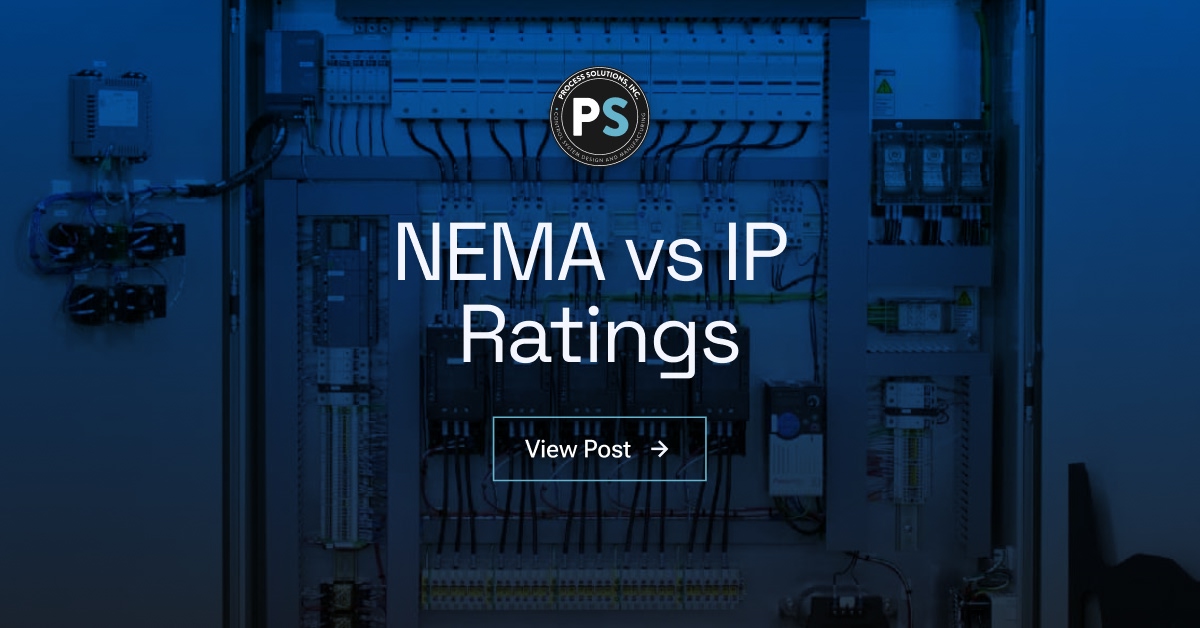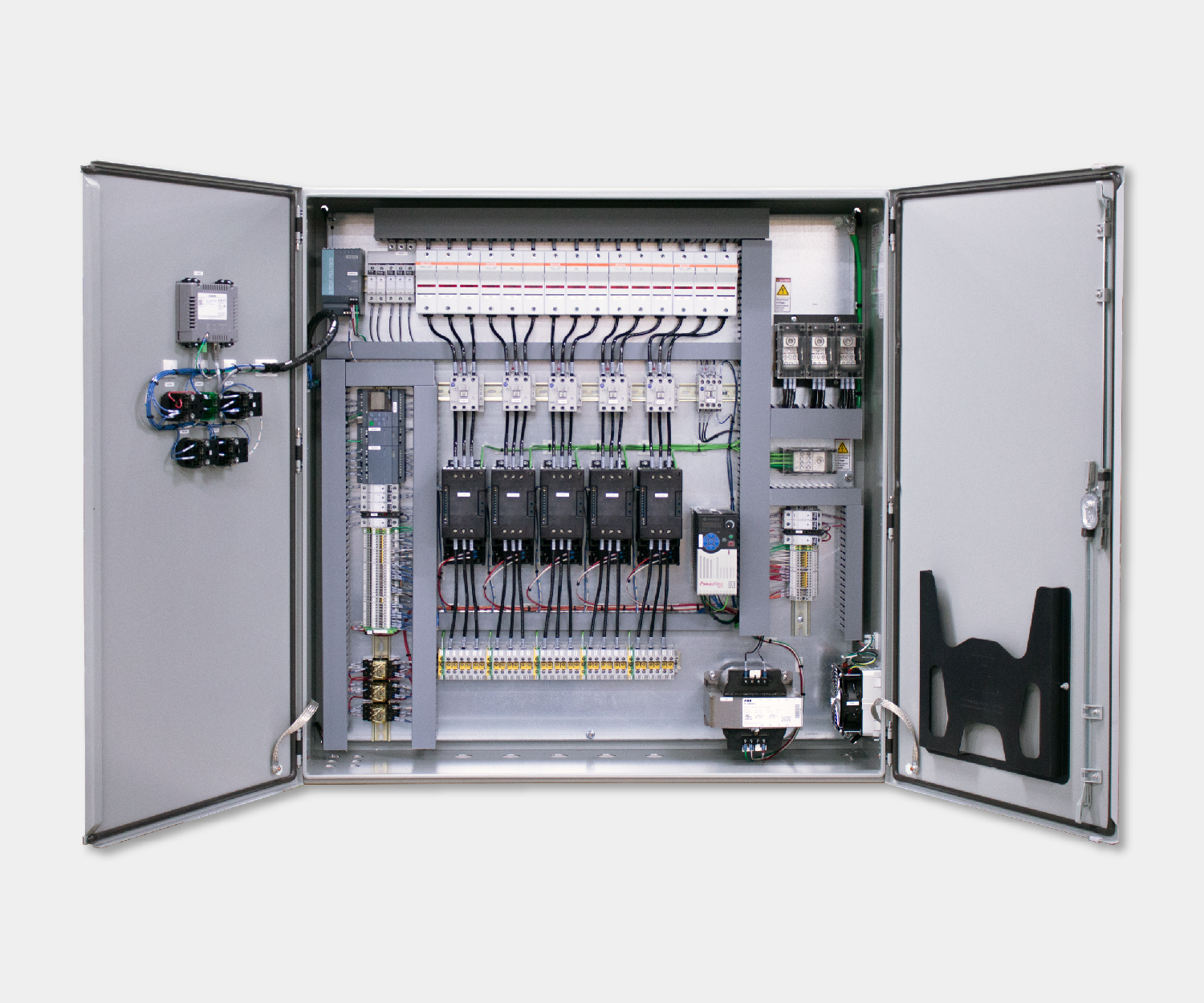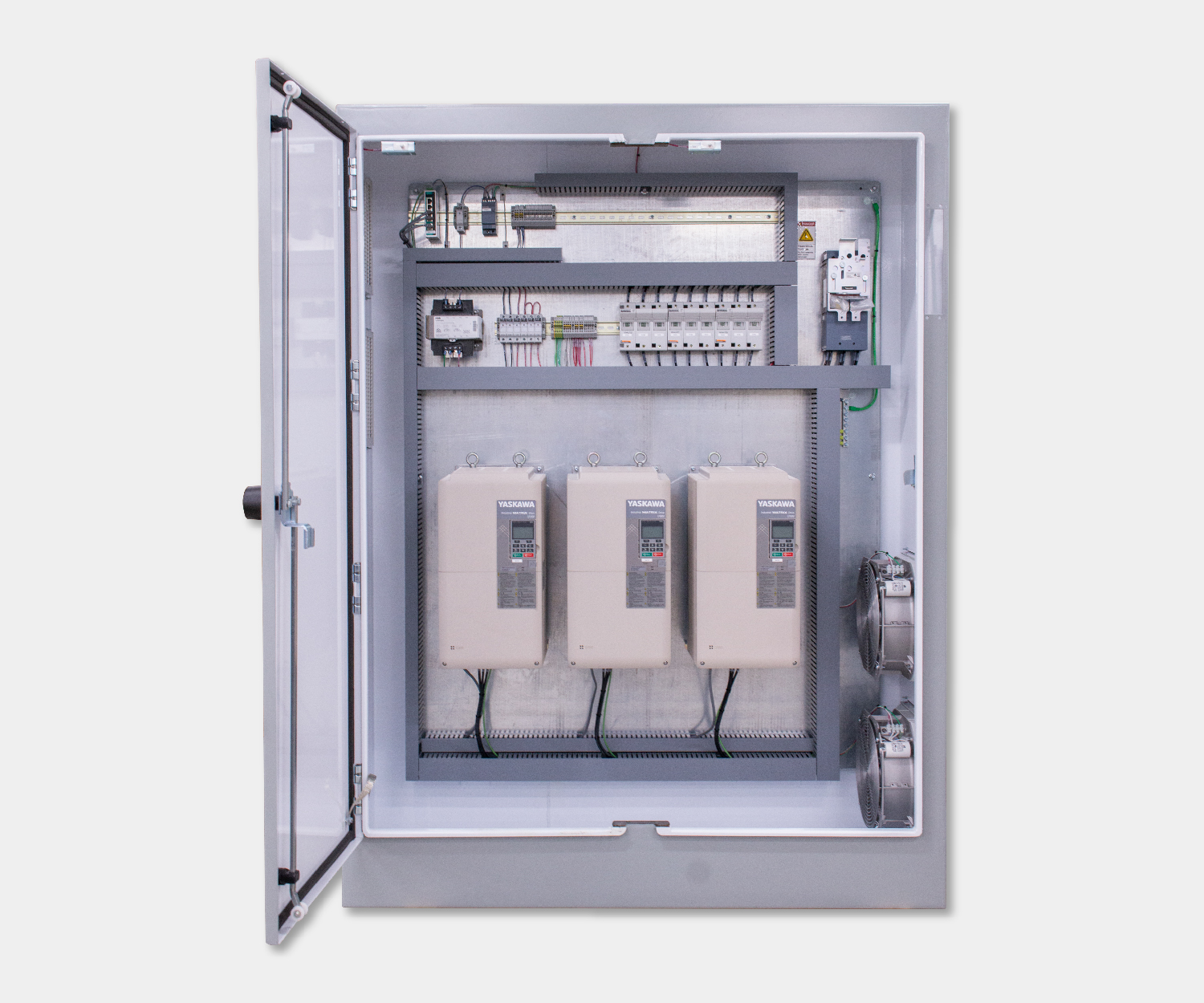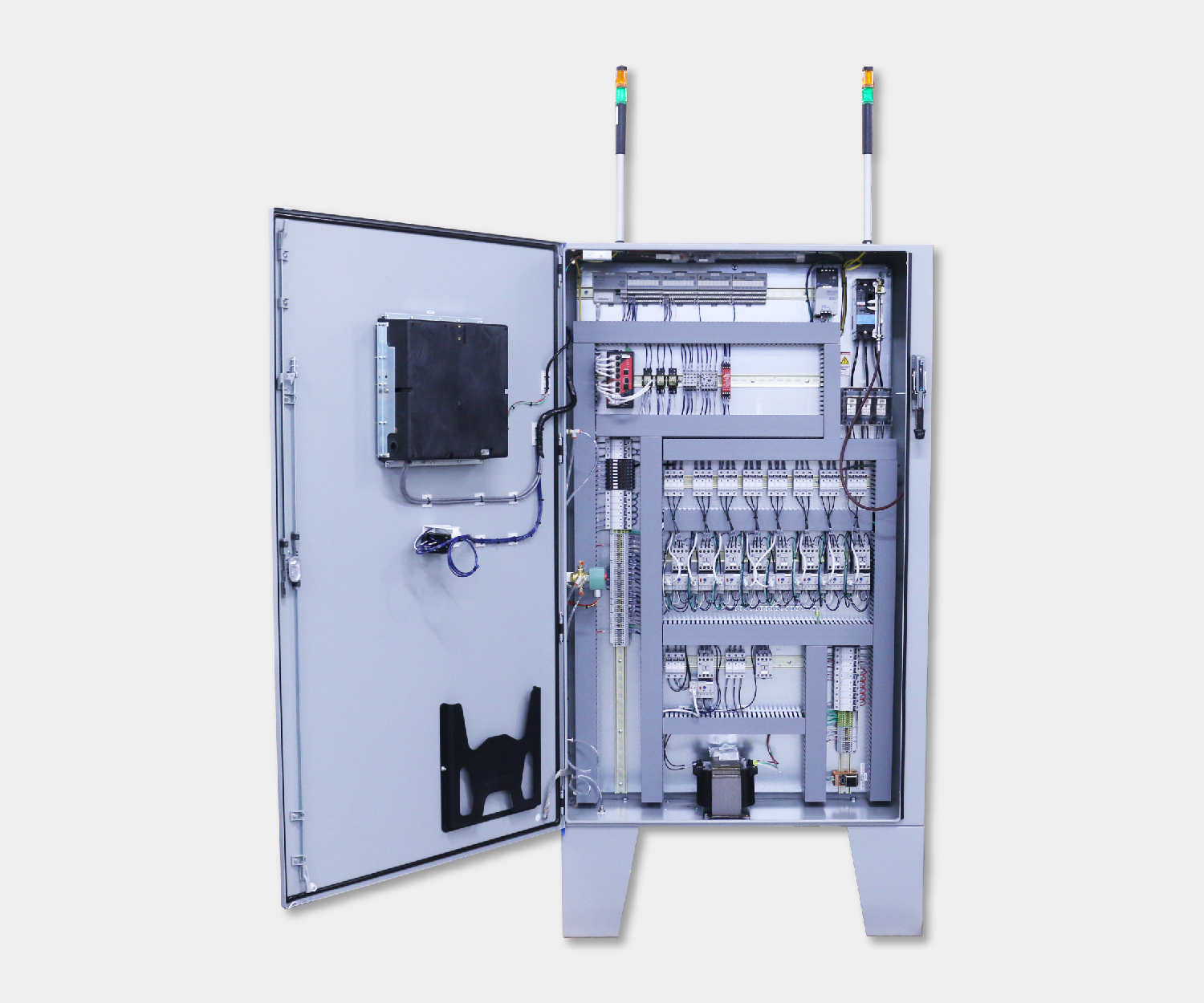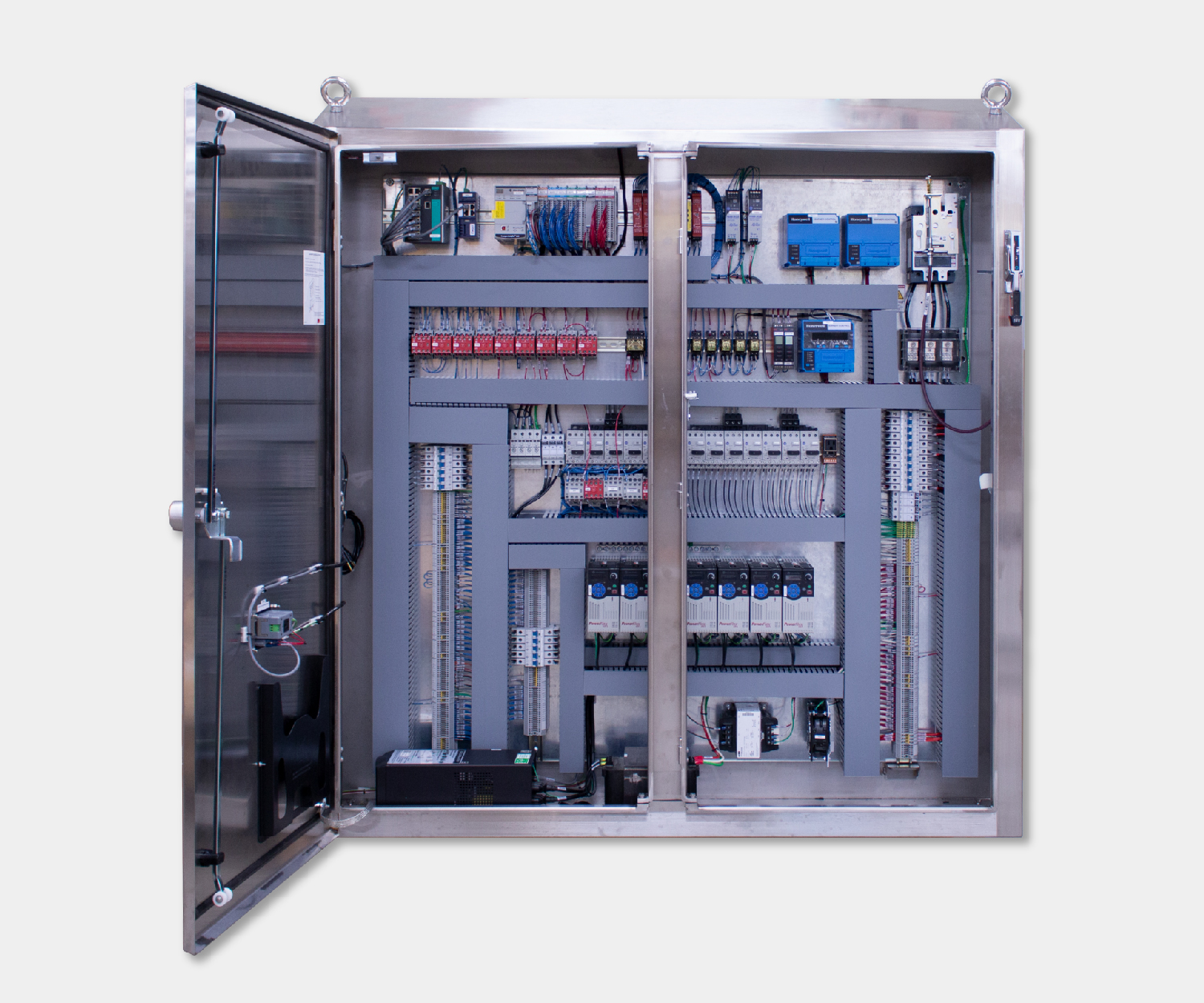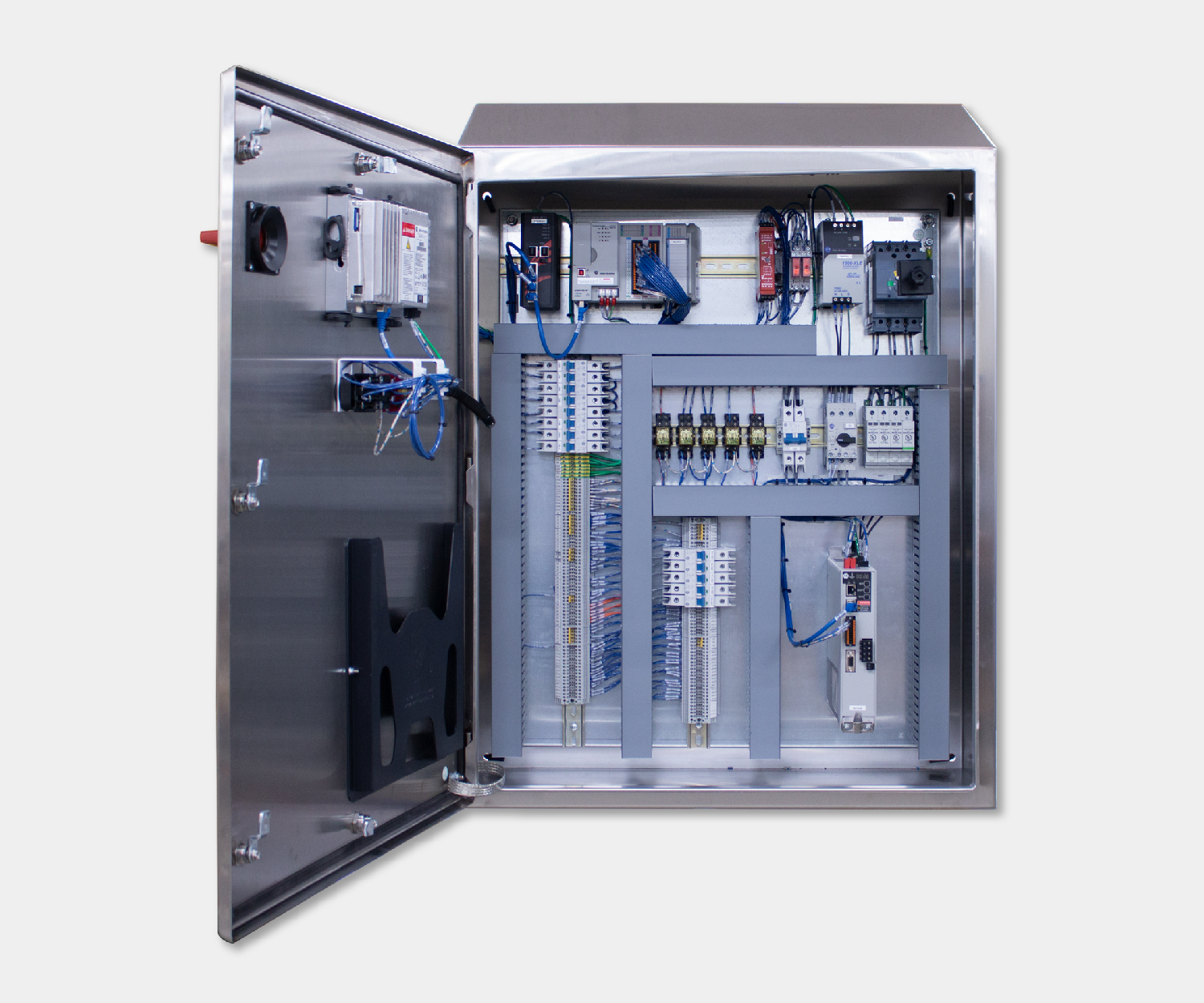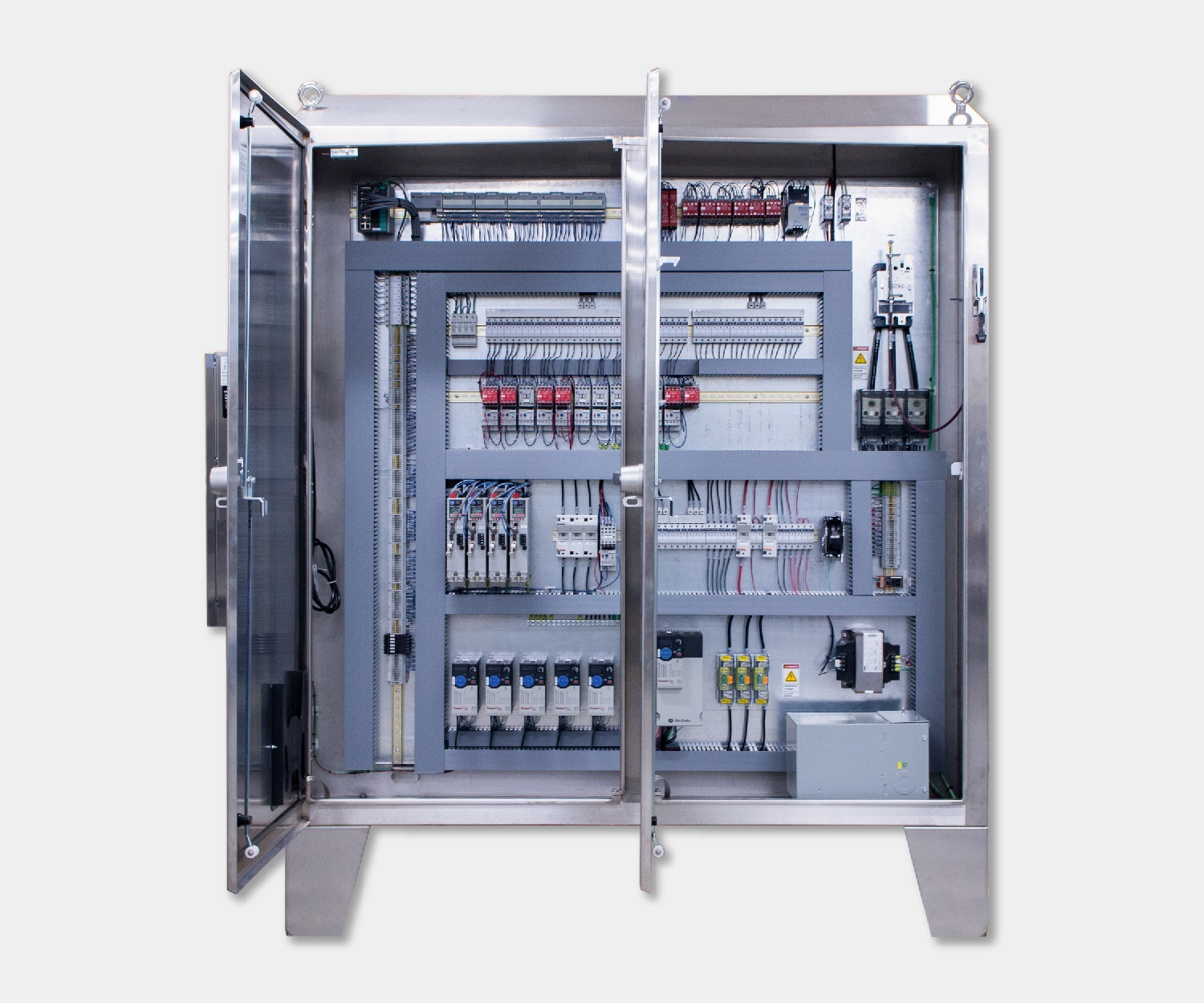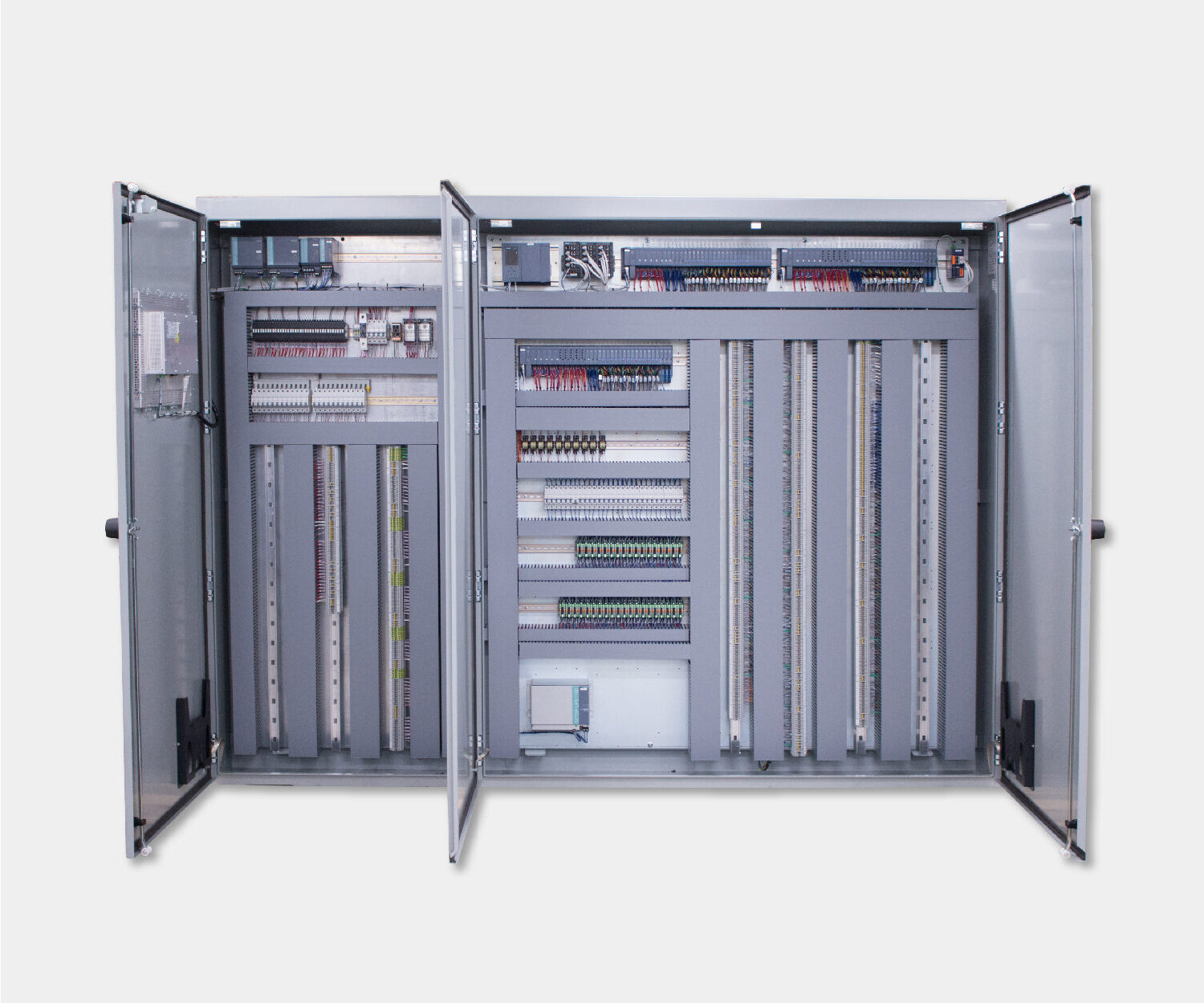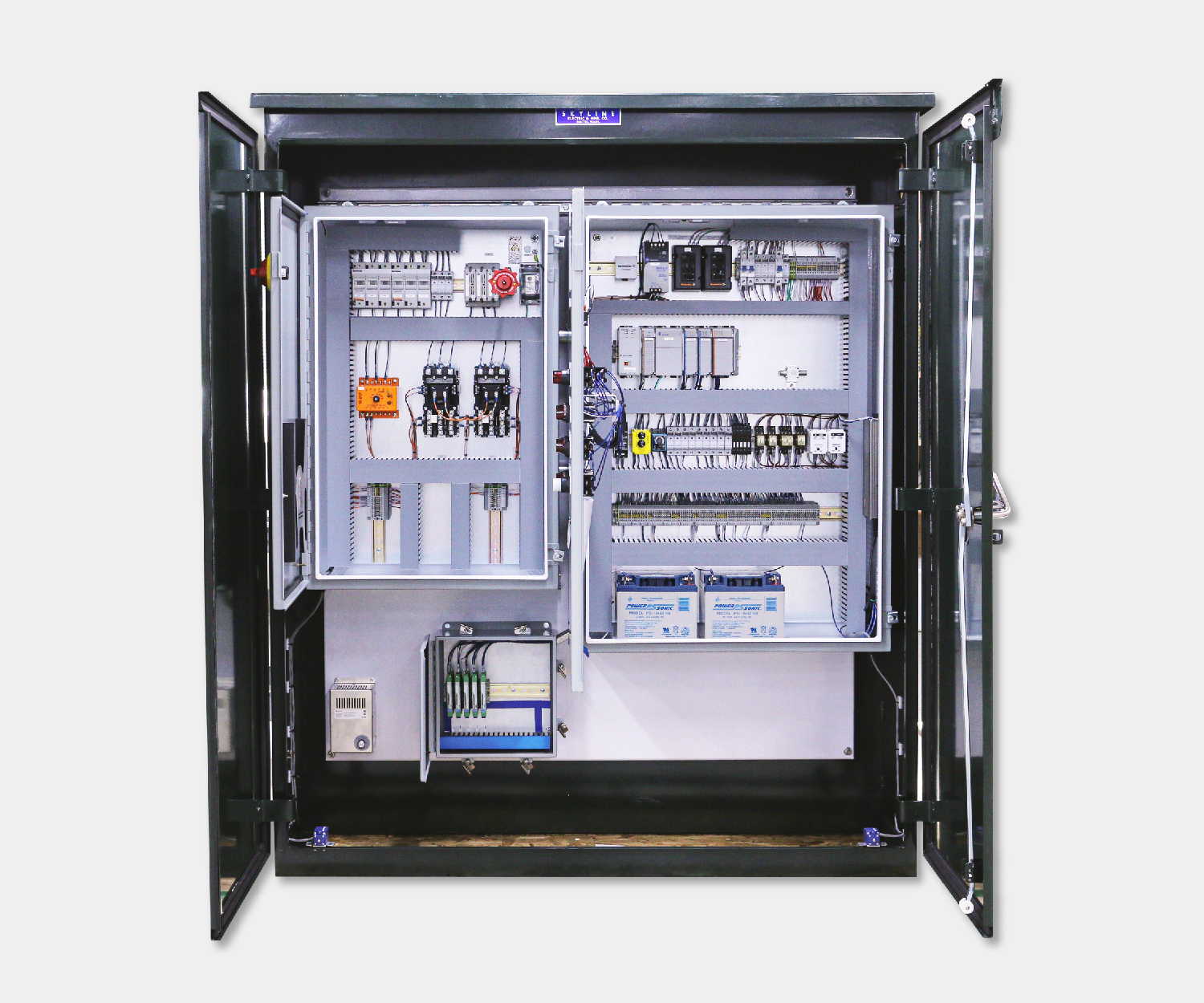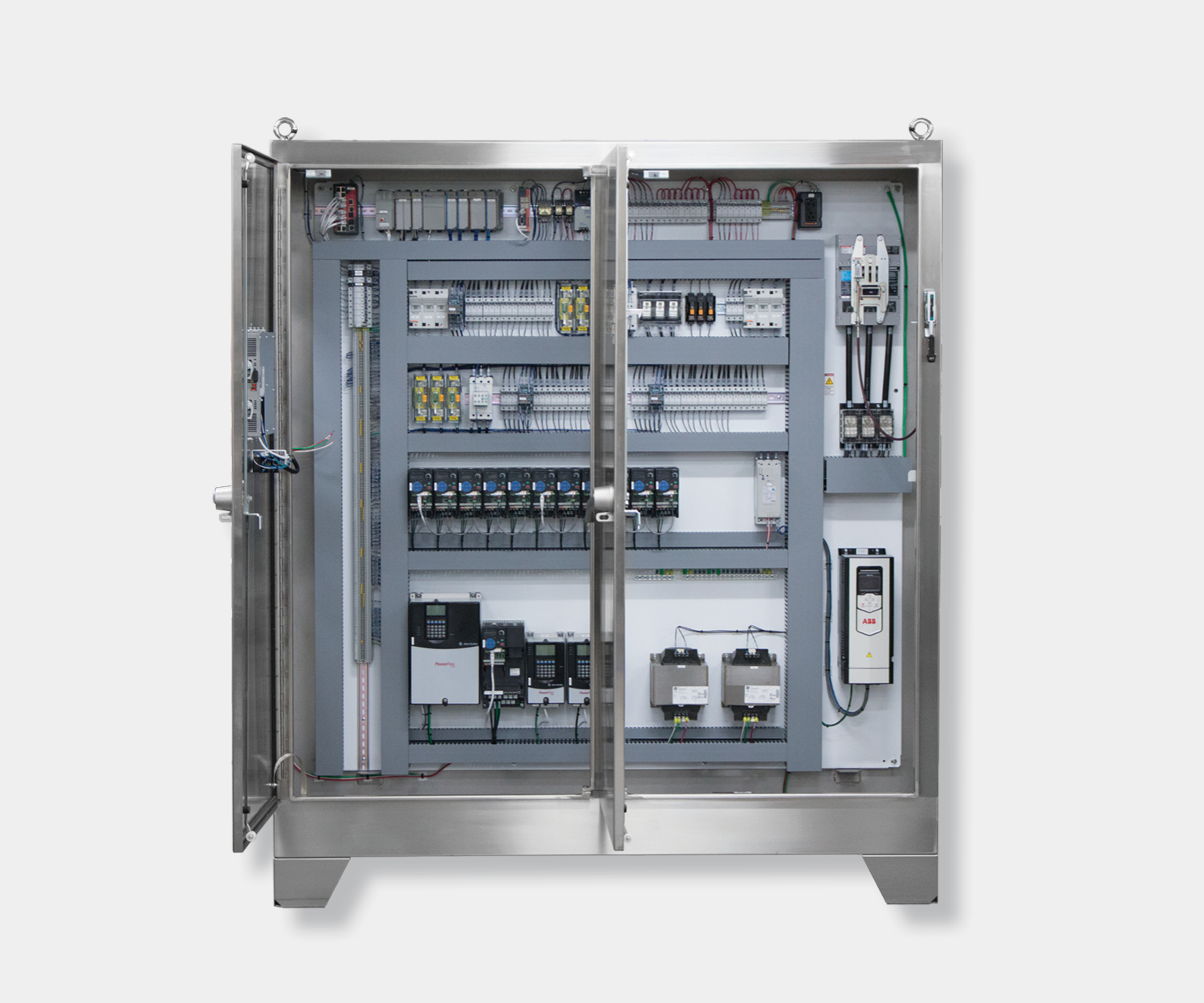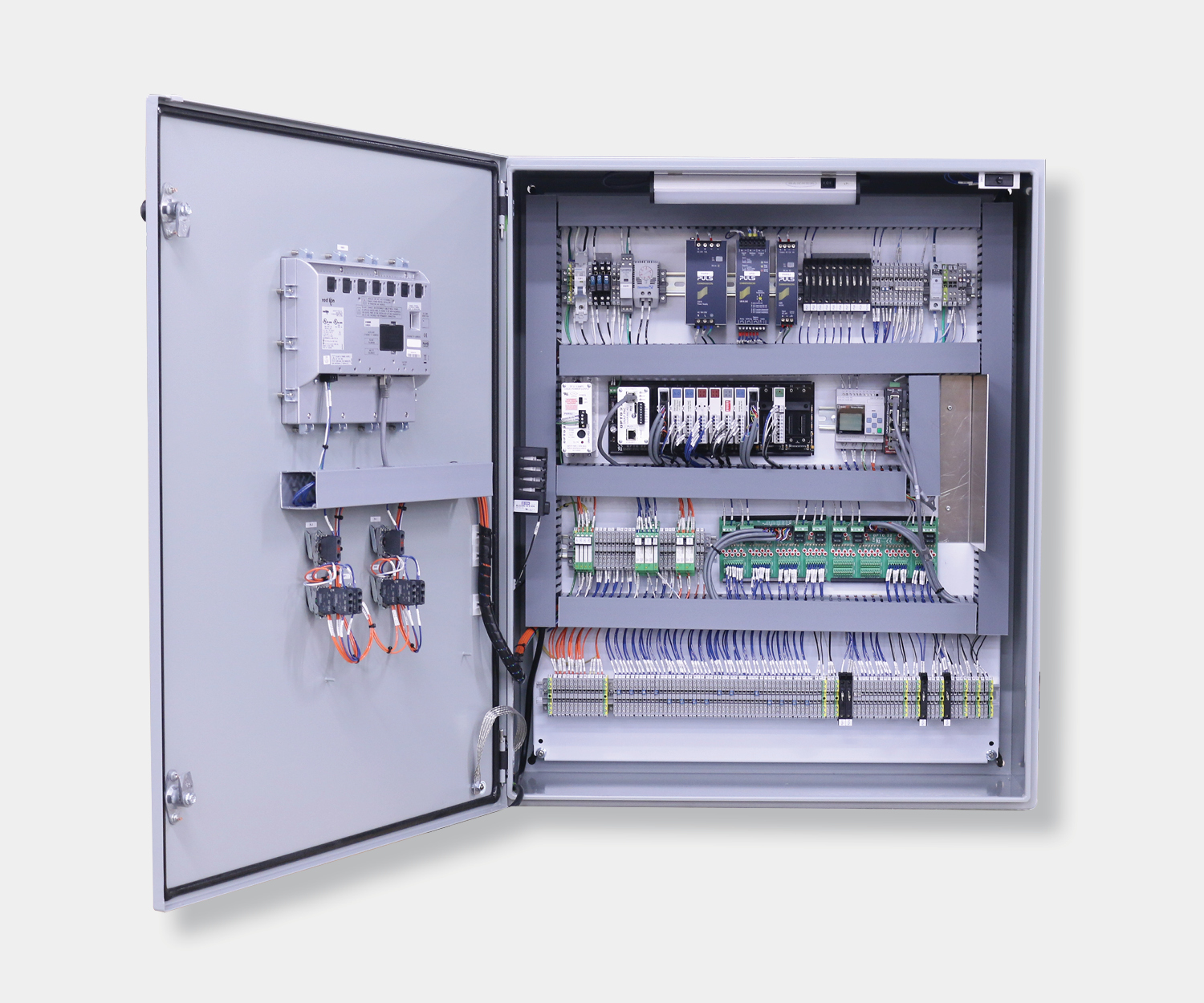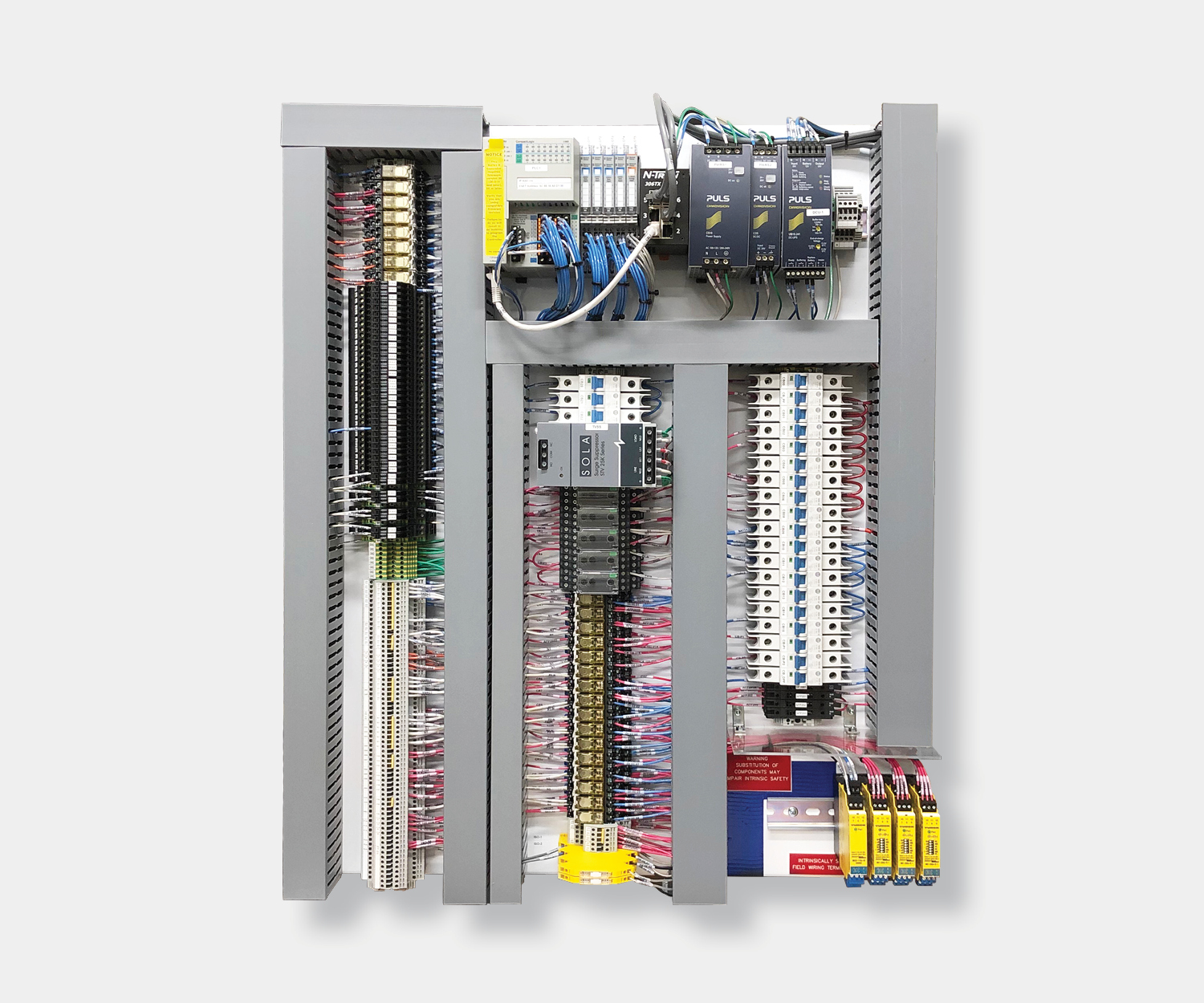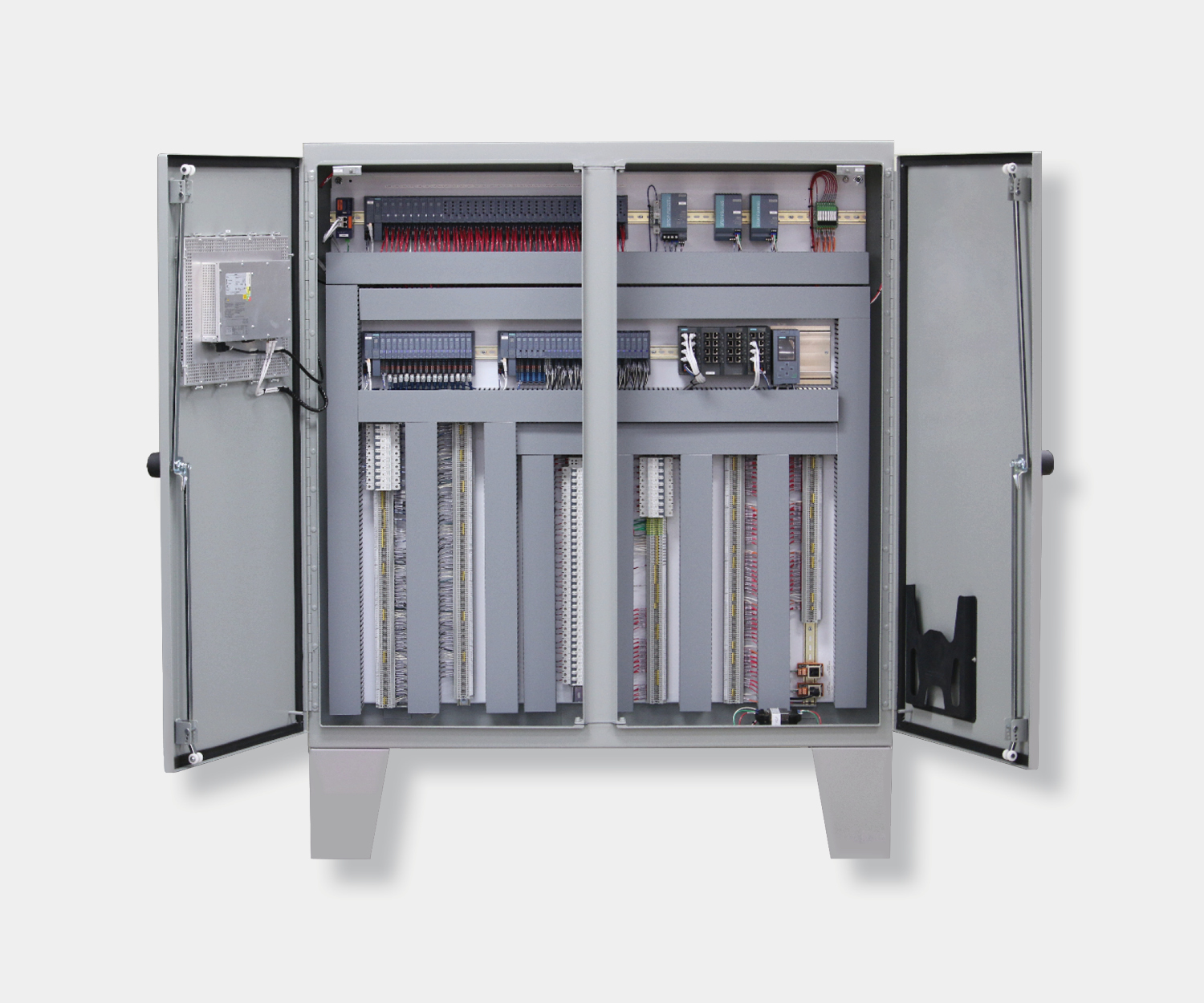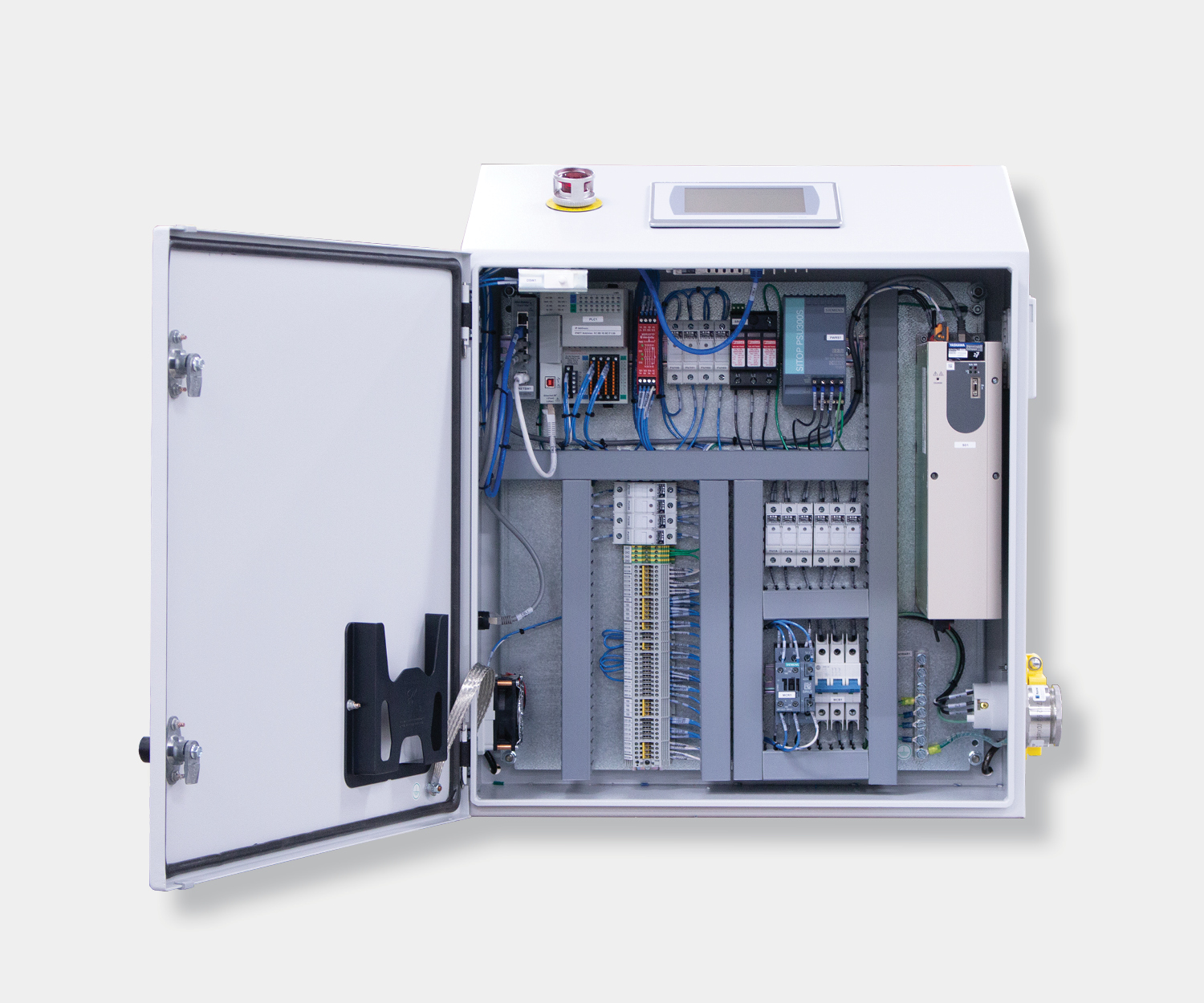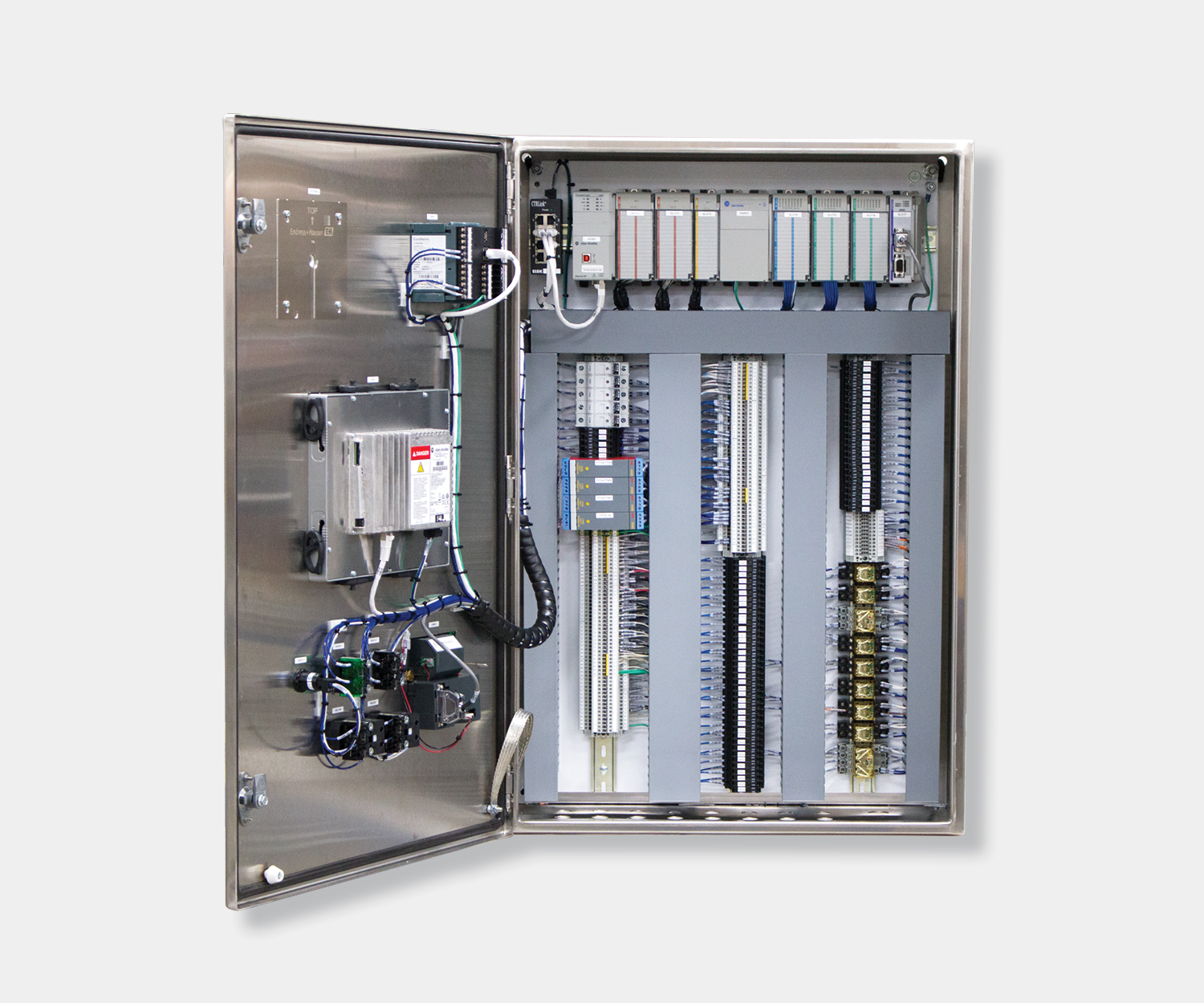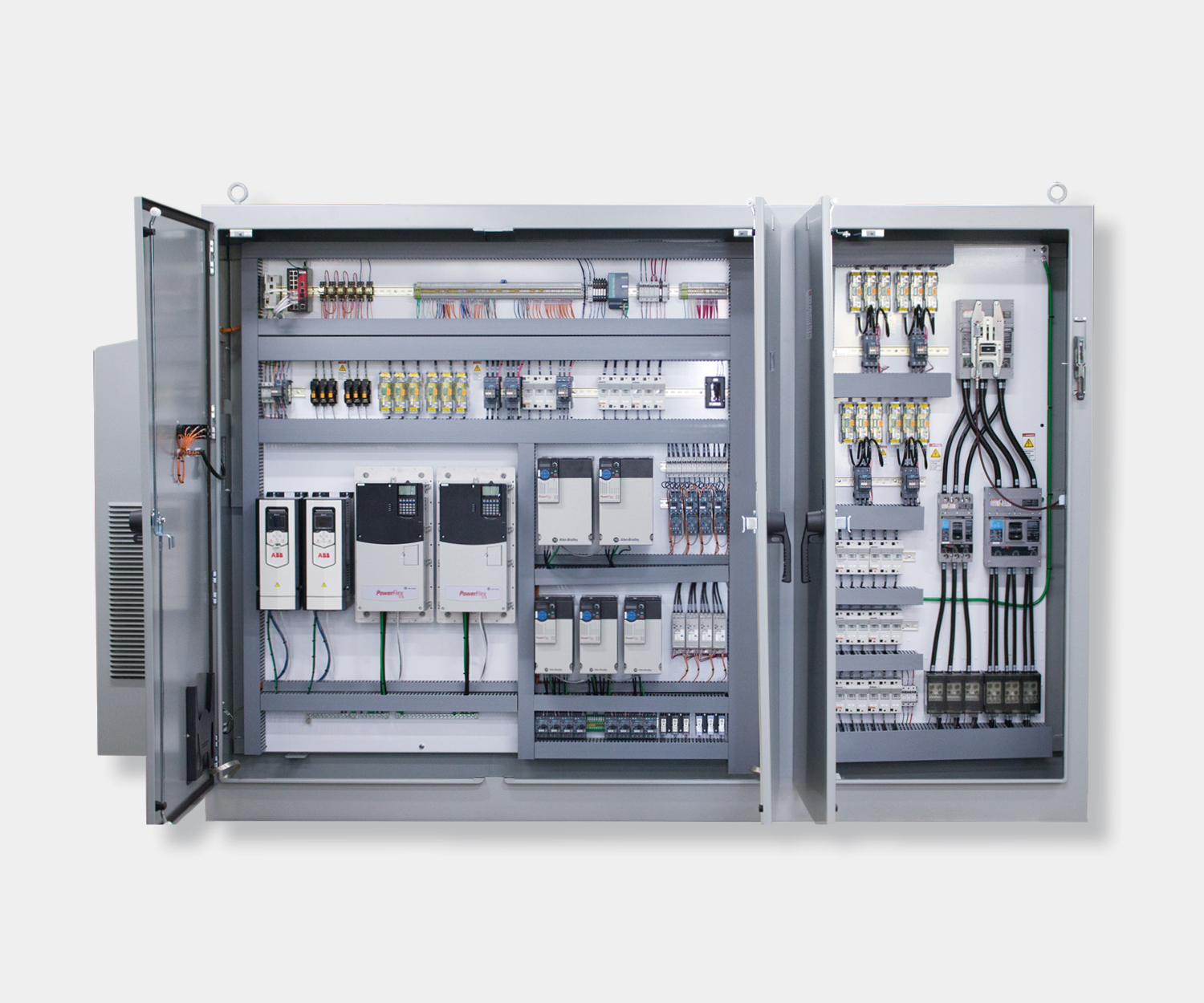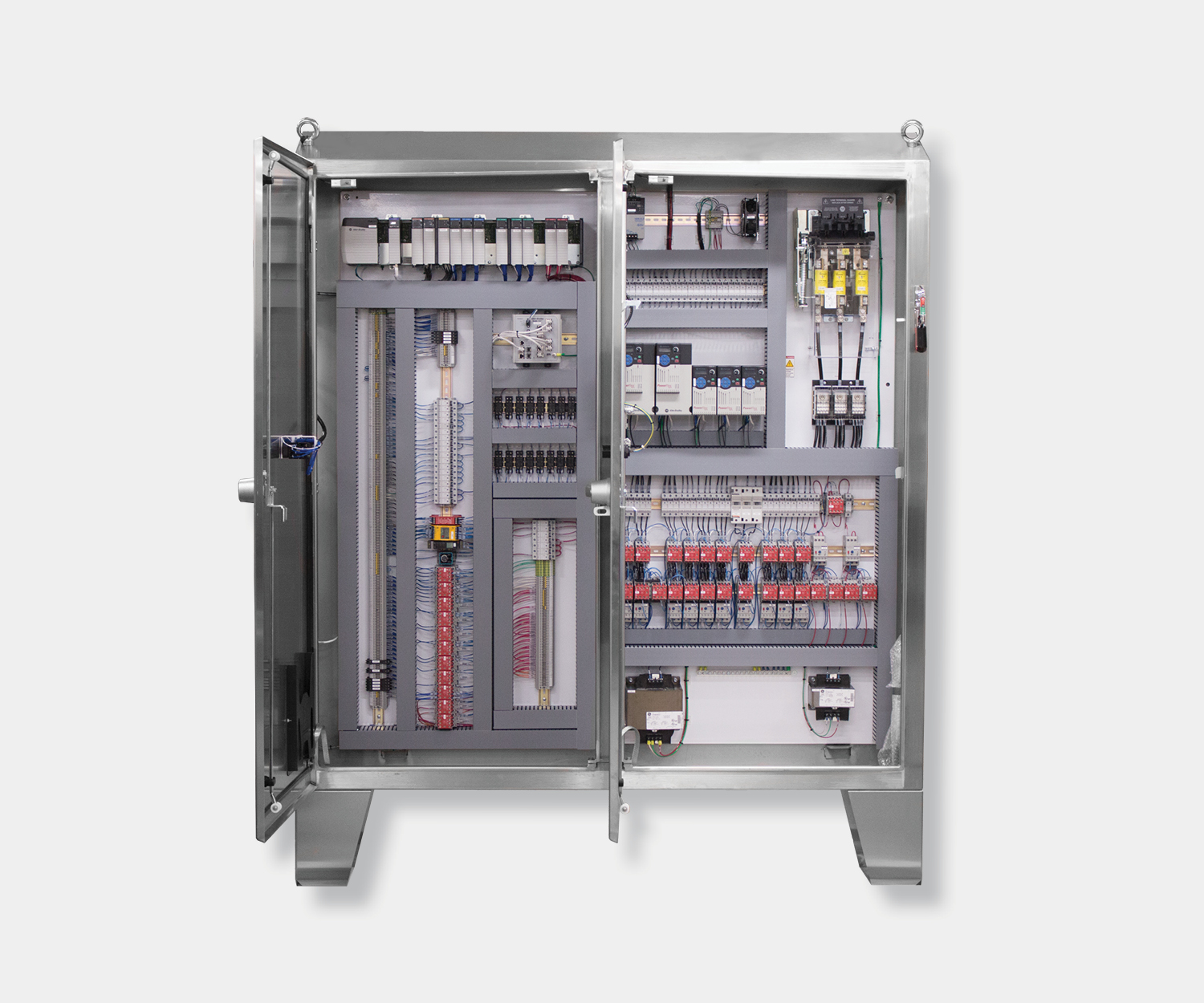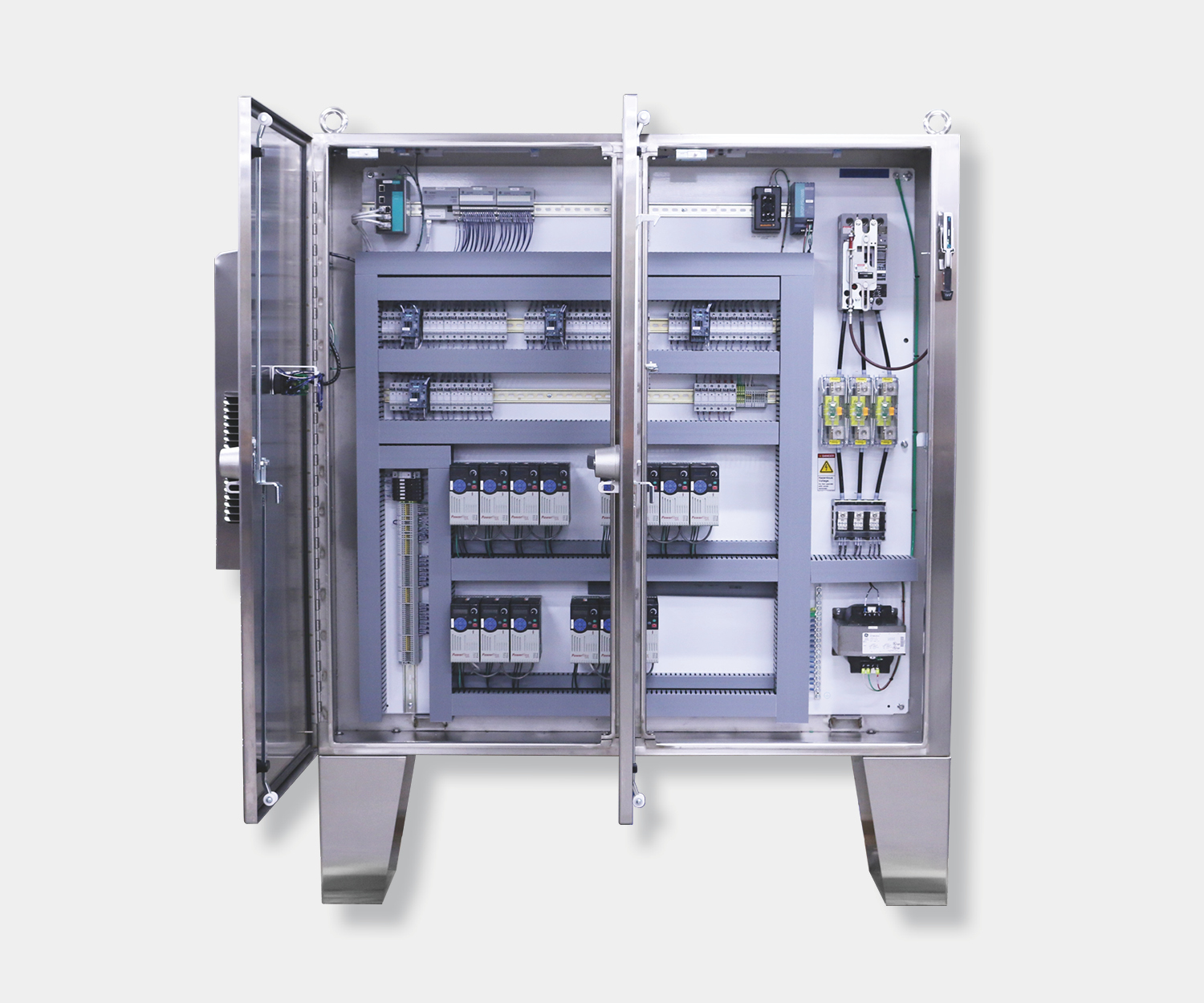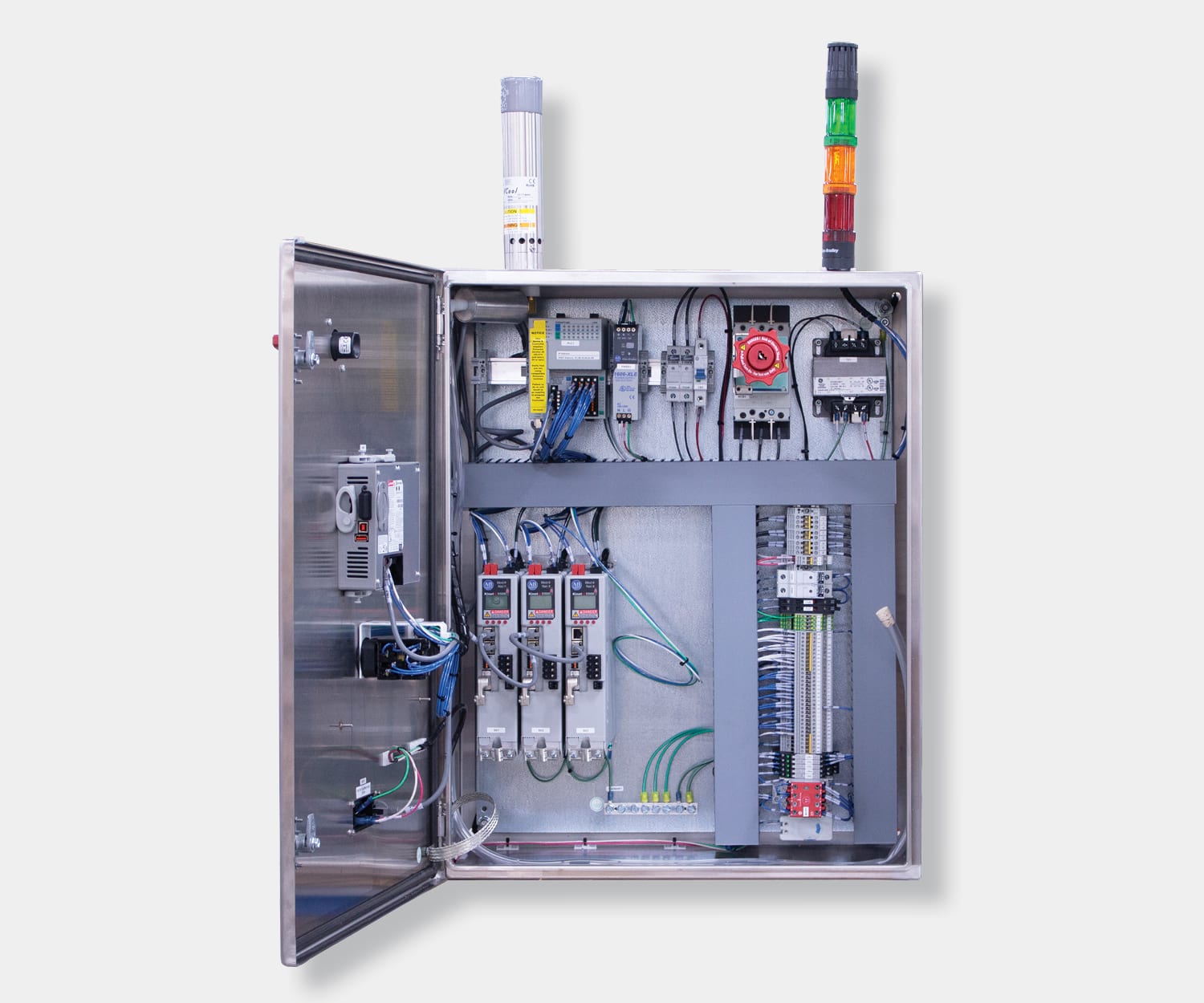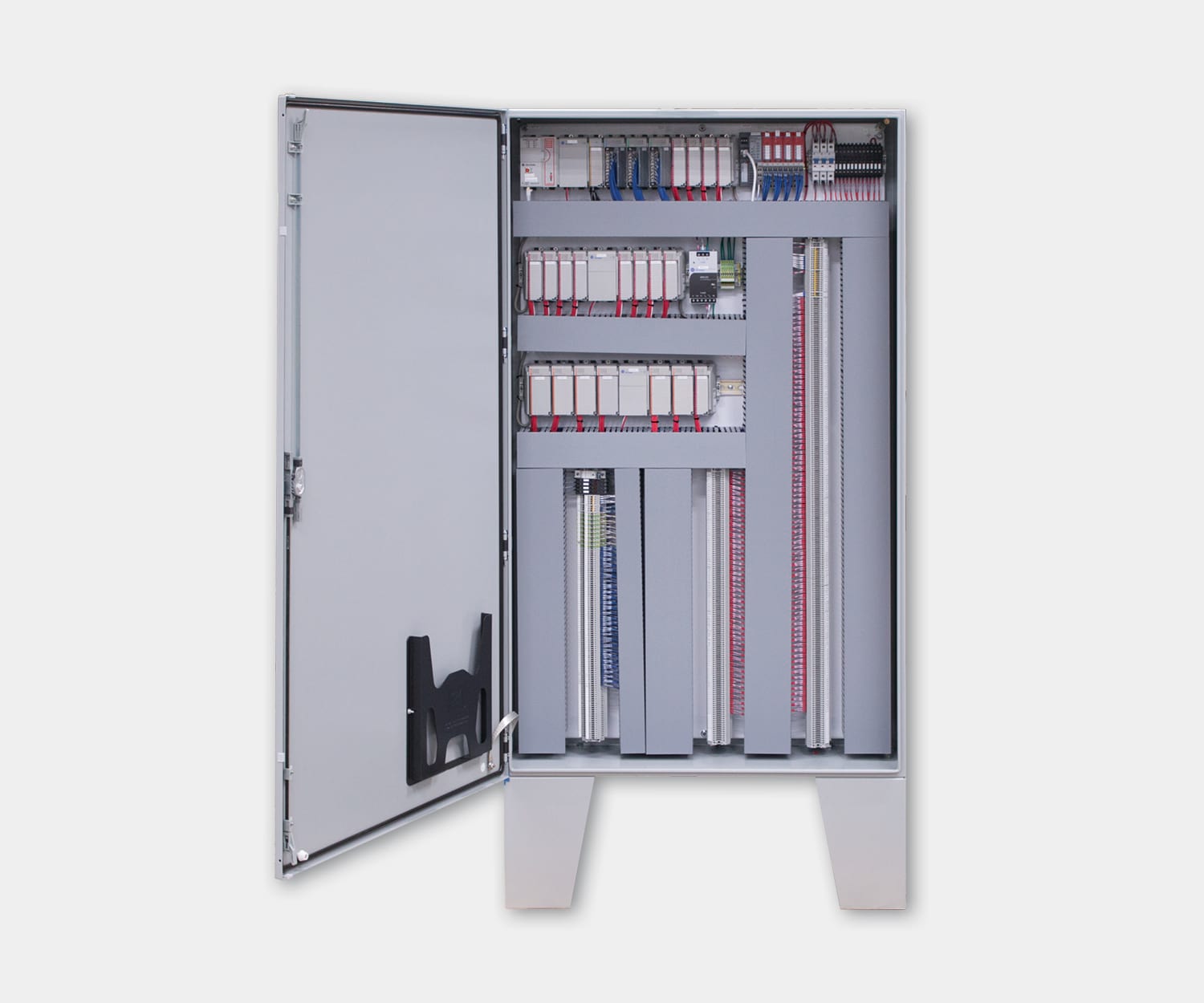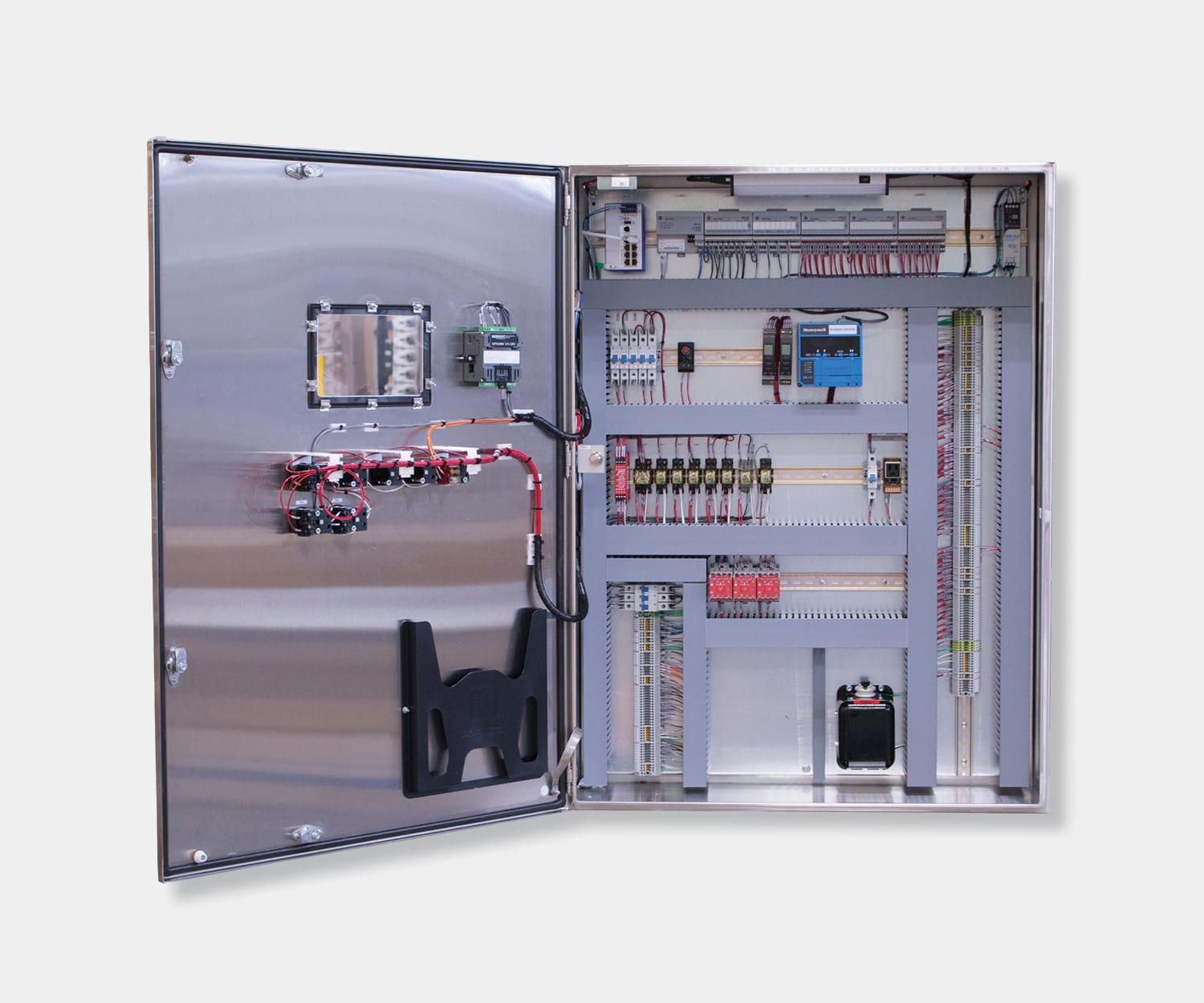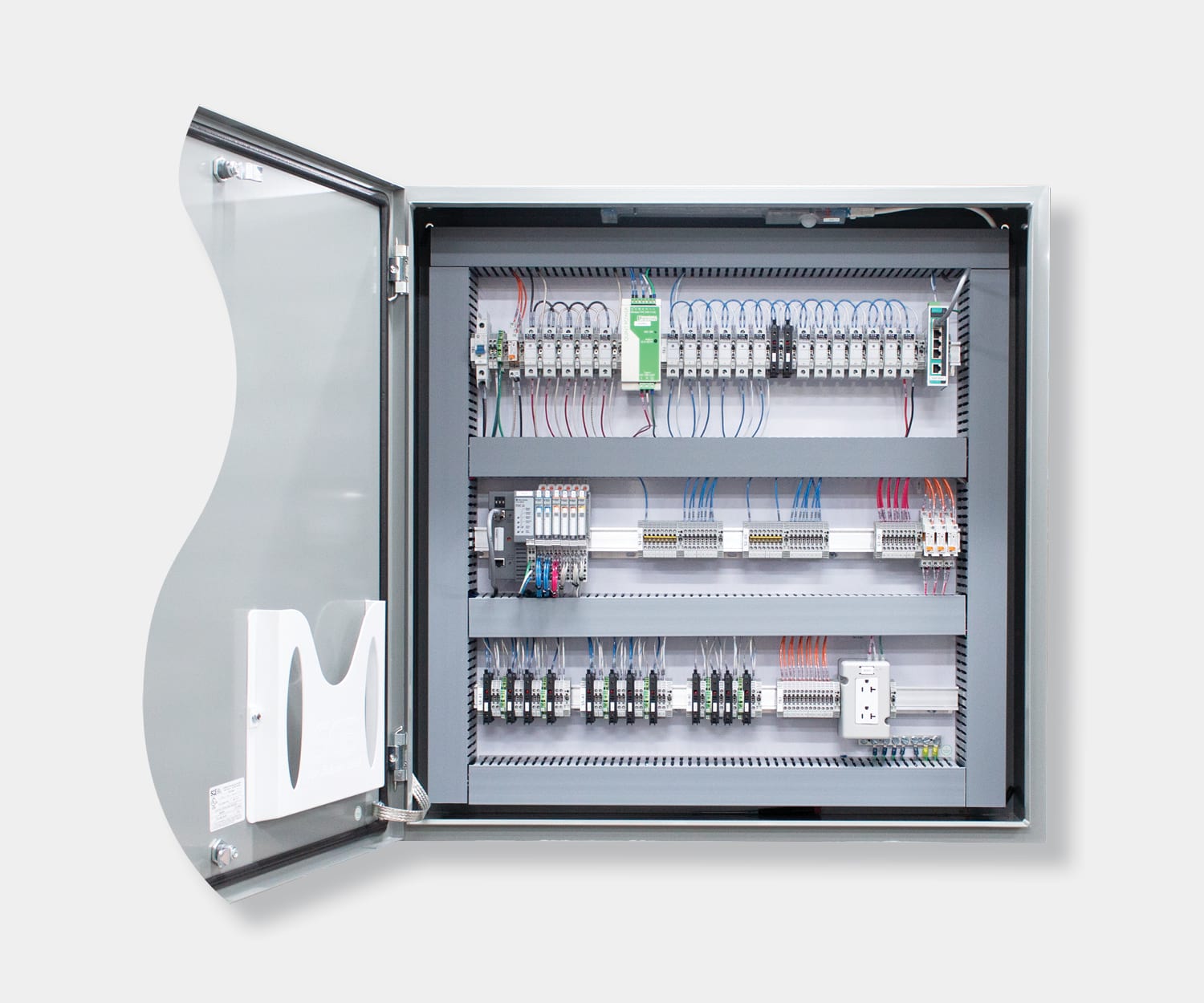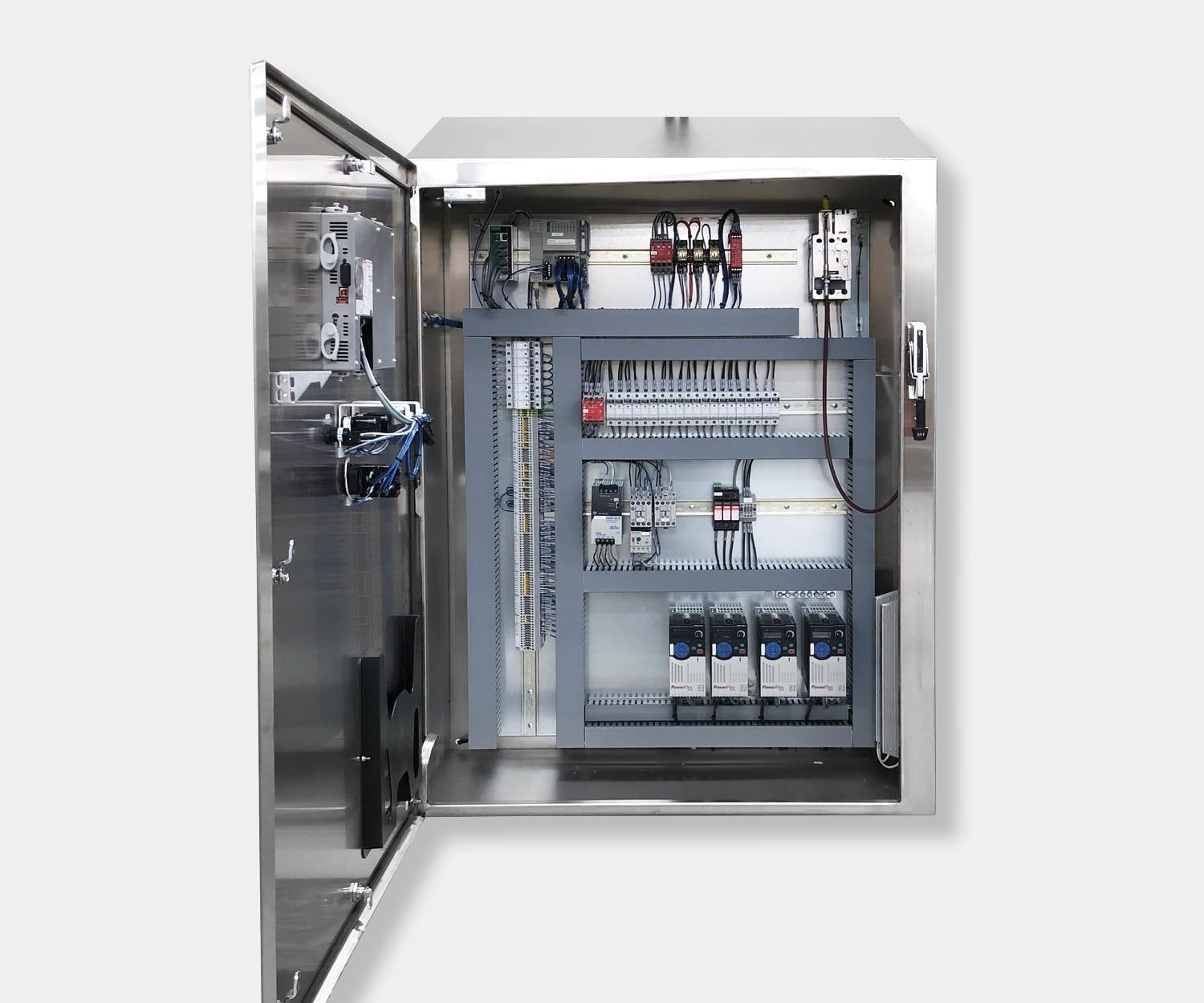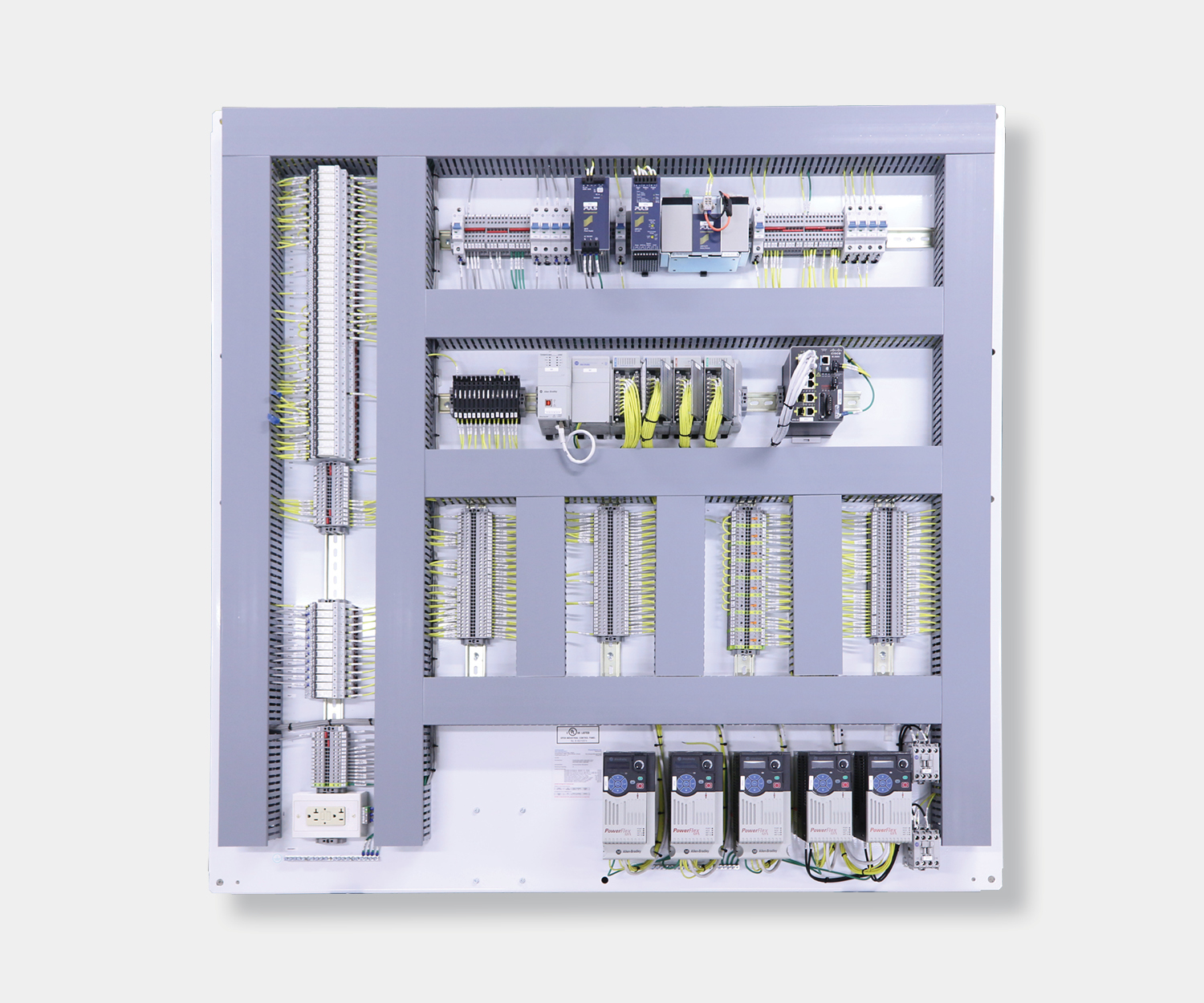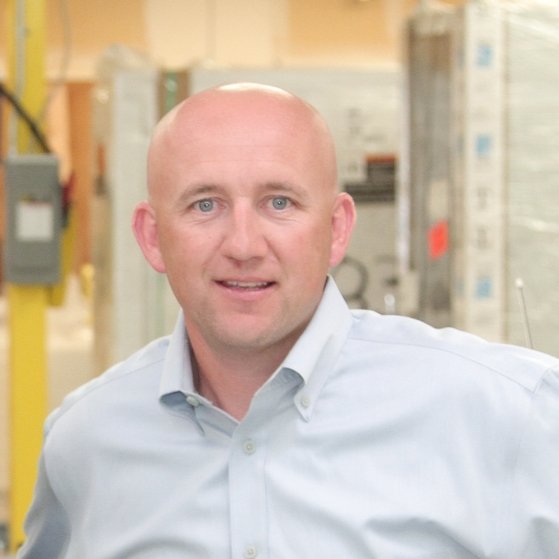Here’s a problem most facility managers don’t see coming: your control panel might have a 65 KAIC rated breaker installed, but if one fuse or motor controller inside is only rated for 10 KAIC, your entire panel’s protection drops to 10 KAIC. That gap between what you think you have and what you actually have can lead to catastrophic failures.
KAIC ratings determine whether your electrical protection devices can safely interrupt fault currents during short circuits. Get it wrong and you’re looking at fires, equipment explosions, and violations of the National Electrical Code. Yet many facilities rely on default assumptions or outdated documentation when specifying control panels.
This article explains what KAIC ratings actually mean, how they differ from SCCR ratings, and what you need to do to keep your facility compliant and safe.
KAIC vs SCCR: Understanding the Critical Difference
These terms get used interchangeably, but they measure different things. Understanding the distinction matters for compliance and safety.
| KAIC (Kilo Ampere Interrupting Capacity) | SCCR (Short Circuit Current Rating) |
|---|---|
| Applies to individual protective devices (breakers, fuses, motor controllers) | Applies to the complete control panel assembly |
| Maximum fault current the device can safely interrupt | Maximum fault current the entire panel can safely withstand |
| Marked on component labels | Required on panel nameplate per NEC Article 409 |
| Example: A circuit breaker rated 35 KAIC | Example: A control panel rated 35 KAIC SCCR |
Here’s the catch: your panel’s SCCR is limited by the lowest-rated component inside it. Install one 10 KAIC fuse in a panel full of 65 KAIC breakers, and your panel’s SCCR drops to 10 KAIC. Every component matters.
Devices with KAIC ratings include circuit breakers, fuses, motor circuit protectors, and manual motor controllers. Some devices have multiple KAIC ratings depending on installation conditions, which is why expertise matters when specifying components.
What NEC Article 409 Actually Requires
The National Electrical Code doesn’t leave SCCR compliance optional for industrial control panels.
Section 409.110(4) mandates that your panel’s nameplate must show its SCCR. This isn’t a suggestion. If the label is missing or wrong, your panel doesn’t meet code.
Section 409.22 prohibits installing control panels where the available fault current exceeds the panel’s marked SCCR. Run a fault current study that shows 45 kA available at the installation point? Your panel needs an SCCR of at least 45 kA or it can’t be legally installed there.
The 2023 NEC update added surge protection requirements under Section 409.70, expanding what you need to consider during panel design.
Missing or incorrect SCCR labeling creates problems during inspections. Electrical inspectors look for this marking, and they won’t sign off on installations without proper documentation. More importantly, underrated equipment puts your people and operations at real risk during fault conditions.
Typical KAIC Ratings and When You Need Higher Protection
KAIC ratings typically range from 10k to 100k amperes. Common ratings include 10 KAIC, 14 KAIC, 22 KAIC, 25 KAIC, 35 KAIC, 42 KAIC, 65 KAIC, and 100 KAIC.
For 120V to 240V systems, you’ll typically see lower ratings. A 10 KAIC or 14 KAIC rating often provides adequate protection in smaller facilities or systems fed from smaller transformers.
For 480V systems, the story changes. These systems commonly require 35 KAIC, 65 KAIC, or 100 KAIC protection depending on the facility’s electrical infrastructure. Large industrial facilities with substantial utility service and nearby transformers generate higher available fault currents that demand higher-rated protection.
You need higher KAIC ratings when:
- Your facility has large utility transformers nearby
- Short conductor runs exist between the service entrance and your panel
- Multiple motor loads contribute to fault current
- Your electrical system has low impedance
- You’re adding capacity to an existing system
The only way to know for certain what rating you need is through a professional fault current study. Guessing gets expensive fast.
How to Determine the Right KAIC Rating for Your Facility
Professional fault current studies calculate the maximum short circuit current available at your panel’s installation location. These studies aren’t optional if you want compliant, safe installations.
The study examines several factors:
Utility transformer capacity and characteristics provide the starting point. Larger transformers deliver higher fault currents. The transformer’s impedance affects how much current can flow during faults.
Conductor length and size create impedance that limits fault current. Longer runs and smaller conductors reduce available fault current at the panel location.
Motor contributions matter because motors can briefly act as generators during faults, adding to the total fault current. Facilities with substantial motor loads need this factored into calculations.
System grounding and configuration influences fault current paths and magnitudes. Different grounding schemes produce different fault current characteristics.
Location within the electrical distribution system determines how much impedance exists between the source and your panel. Panels closer to the service entrance typically face higher available fault currents.
These calculations get complex quickly. The impedance of every conductor, connection, and component between the utility service and your panel affects the final number. This is why qualified electrical engineers handle these studies, not facility staff making rough estimates.
Common Mistakes That Create Safety Risks
Even experienced facility teams make errors that compromise panel protection.
Assuming component ratings ensure panel compliance. Your 65 KAIC breakers don’t guarantee a 65 KAIC panel if other components have lower ratings. The panel is only as strong as its weakest component.
Relying on default 5 KAIC assumptions. Many older facilities were designed assuming 5 KAIC was adequate. Electrical systems change. Utilities upgrade transformers. Capacity increases. That old assumption might now be dangerously wrong.
Missing or faded SCCR labels. Panels need clear, permanent SCCR markings. Labels that wear off or were never installed leave you without documentation during inspections or when planning modifications.
Replacing components without verifying KAIC ratings. Swapping a failed breaker for whatever’s in stock can drop your panel’s SCCR below required levels. Every replacement needs verification against the panel’s documented SCCR.
Not updating documentation after system changes. Add a new transformer? Reconfigure your distribution? Your fault current characteristics changed. Your documentation and possibly your panel ratings need updates too.
Here’s a real-world example of why this matters: we specified a variable frequency drive for a project, but achieving the required motor control meant using fuses that limited protection to approximately 30 kA. After installation and inspection the customer came back stating that the installation requirements were then determined to be 100kA. The panel had to be reworked on site and commissioning delayed. This is the type of constraint that surfaces during proper engineering not after installation.
The Cost and Risk Balance
Higher-rated components cost more. A 100 KAIC breaker carries a premium over a 10 KAIC version. But compare that premium to the costs of getting it wrong.
Underrated equipment that fails during a fault can cause fires, explosions, and equipment damage costing hundreds of thousands in repairs and downtime. Facilities in highly regulated industries face additional compliance penalties and potential shutdown orders.
Insurance companies increasingly scrutinize electrical system compliance. Non-compliant panels can affect coverage and claims. Some insurers require specific SCCR documentation as part of risk assessment.
The right approach is specifying adequate protection from day one based on actual fault current studies. Saving money on components today creates much larger expenses when something fails.
Best Practices for KAIC and SCCR Compliance
During Design:
- Conduct professional fault current studies before panel specification
- Select components rated for calculated fault currents
- Document all assumptions and calculations
- Work with certified panel shops that understand UL 508A requirements
During Installation:
- Verify available fault current at installation location
- Confirm SCCR labeling is present and correct
- Maintain complete documentation packages
- Schedule electrical inspections before energizing
During Maintenance:
- Update fault current studies when system changes occur
- Replace failed components with equal or higher KAIC ratings
- Train maintenance staff on SCCR importance
- Review panel ratings during facility expansions
Get Your KAIC and SCCR Right From the Start
KAIC and SCCR ratings protect your facility, equipment, and people during the worst electrical events. The complexity of fault current calculations, component interactions, and code requirements makes this a job for specialists, not general contractors.
Getting protection right requires professional fault current studies, proper component selection, and complete documentation from the beginning. Facilities that skip these steps face safety risks, code violations, and expensive retrofits.
Talk to a certified control panel specialist to evaluate available fault current, verify SCCR requirements, and specify compliant protection for your facility. Proper engineering and certified panel construction ensure your control systems meet safety standards and keep your operations running safely.
Frequently Asked Questions
Q: What’s the difference between KAIC and SCCR?
KAIC applies to individual protective devices and shows the maximum fault current they can interrupt. SCCR applies to complete panel assemblies and shows the maximum fault current the entire panel can withstand.
Q: How do I determine what KAIC rating my facility needs?
Professional fault current studies calculate available short circuit current at your panel location based on utility service, transformers, conductor sizing, and system configuration.
Q: Can I use a 10 KAIC breaker in a panel that needs 35 KAIC SCCR?
No. That 10 KAIC component would limit your entire panel’s SCCR to 10 KAIC, making it non-compliant if your facility requires 35 KAIC protection.
Q: What happens if my panel’s SCCR is lower than available fault current?
NEC Article 409 prohibits the installation, inspectors won’t approve it, and during a fault the panel could fail catastrophically with fire and explosion risks.
Q: Can I replace a component without affecting the panel’s SCCR?
Only if the replacement has equal or higher KAIC rating. Lower-rated replacements reduce the panel’s overall SCCR and require re-evaluation and possibly new labeling.
Q: Do I need to update SCCR ratings after system changes?
Yes. Changes to utility service, transformers, or distribution configurations alter available fault current and may require panel modifications or new fault current studies.
Q: Who performs fault current studies?
Licensed professional electrical engineers conduct these studies using detailed system data and specialized calculation software.
